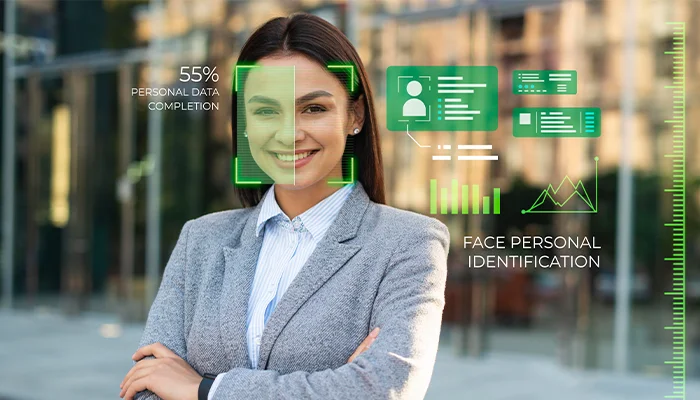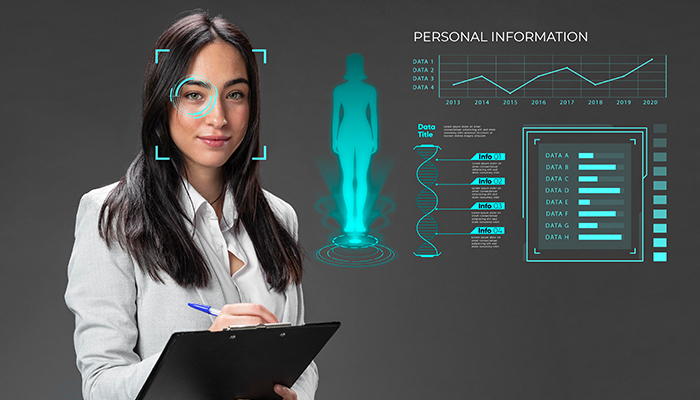What are the Applications of Human-Augmentation

APR, 15, 2024 14:20 PM
What are the Applications of Human-Augmentation
Human augmentation technology is reshaping industries and revolutionising human capabilities across diverse sectors. This transformative force spans fields from healthcare to entertainment, education to manufacturing, offering innovative solutions to enhance human potential. Augmentation technologies encompass a wide array of tools and techniques, leveraging advancements in biotechnology, robotics, artificial intelligence, and wearable
In healthcare, human augmentation technology is improving patient outcomes and advancing medical procedures. Innovations like exoskeletons aid mobility for individuals with disabilities, while augmented reality (AR) assists surgeons with real-time visualisation during operations. Prosthetics equipped with advanced sensors and brain-computer interfaces (BCIs) offer unprecedented levels of control and integration.
Education and training benefit from immersive experiences facilitated by human augmentation technology. Augmented reality (AR) overlays digital information onto the physical world, enhancing learning comprehension and retention. Virtual reality (VR) simulations provide realistic training environments for various industries, enabling learners to practice skills in a safe and controlled setting.
In manufacturing, human augmentation technology drives efficiency, safety, and productivity. Exoskeletons assist workers with physically demanding tasks, while AR systems offer real-time guidance on assembly lines. Remote maintenance and repair operations benefit from AR-enabled smart glasses, reducing downtime and optimising workflows.
Entertainment experiences are elevated through human augmentation technology, blurring the lines between reality and fantasy. Augmented reality games create immersive gaming experiences by superimposing digital elements on the physical environment. Virtual reality gaming transports players into fully immersive digital worlds, offering a new level of engagement and interaction.
human augmentation technology continues to advance, it brings forth profound implications for society. Ethical considerations regarding privacy, accessibility, and equity must be addressed to ensure responsible innovation and protect individual rights. By exploring the multifaceted landscape of human augmentation, we uncover its vast potential to enhance human capabilities and drive societal progress.
Understanding human-augmentation technology
Human augmentation technology encompasses a broad spectrum of tools, devices, and techniques designed to enhance human capabilities, both physical and cognitive. These technologies leverage advancements in fields such as biotechnology, robotics, artificial intelligence, and wearable computing to augment human functions and performance. Augmentation reality systems, a subset of human augmentation technology, integrate virtual elements with the physical world, creating immersive and interactive experiences.
lications in Healthcare
In the realm of healthcare, human augmentation technology holds immense promise for improving patient outcomes, enhancing medical procedures, and advancing research. One notable application is the development of exoskeletons, robotic devices that augment physical strength and mobility. These exoskeletons can assist individuals with mobility impairments, enabling them to walk and perform daily tasks with greater independence.
Furthermore, human augmentation technology is revolutionising surgical procedures through innovations like augmented reality (AR) and virtual reality (VR). Surgeons can use AR overlays to visualise patient anatomy in real-time during operations, enhancing precision and reducing the risk of errors. VR simulations provide training opportunities for medical professionals, allowing them to practice complex procedures in a realistic and risk-free environment.
ther area of healthcare benefiting from human augmentation technology is prosthetics and bionics. Advanced prosthetic limbs equipped with sensors and actuators mimic the functionality of natural limbs, restoring mobility and dexterity to amputees. Brain-computer interfaces (BCIs) enable individuals to control prosthetic devices using their thoughts, offering unprecedented levels of control and integration.
lications in Education and Training
Human augmentation technology is also reshaping the landscape of education and training, offering immersive and interactive learning experiences. Augmented reality systems are being used to create educational content that overlays digital information onto the physical world, enhancing comprehension and retention. For example, students studying anatomy can use AR apps to visualise 3D models of the human body, gaining a deeper understanding of complex structures.
Virtual reality environments provide training simulations for a wide range of industries, from aviation to law enforcement. Pilots can practice emergency procedures in realistic VR simulations, while police officers can undergo virtual firearms training in simulated scenarios. These immersive experiences offer a safe and cost-effective alternative to traditional training methods, allowing learners to develop skills in a controlled environment.
lications in Manufacturing and Industry

In the manufacturing sector, human augmentation technology is driving efficiency, safety, and productivity. Exoskeletons are being deployed in industrial settings to assist workers with repetitive tasks and heavy lifting, reducing the risk of musculoskeletal injuries. Augmented reality systems provide real-time guidance and instructions to assembly line workers, improving accuracy and reducing errors.
Furthermore, human augmentation technology plays a crucial role in remote maintenance and repair operations. Technicians equipped with AR-enabled smart glasses can access digital manuals and schematics overlaid on their field of view, facilitating troubleshooting and repairs. This remote assistance capability reduces downtime and travel costs, optimising maintenance workflows in diverse industries.
lications in Entertainment and Gaming
In the entertainment industry, human augmentation technology is transforming the way audiences engage with content, blurring the lines between reality and fantasy. Augmented reality games leverage smartphone cameras and GPS technology to superimpose digital elements onto the physical environment, creating immersive gaming experiences. Players can explore virtual worlds overlaid on real-world locations, interacting with virtual characters and objects in their surroundings.
Virtual reality gaming takes immersion to the next level, transporting players into fully immersive digital environments. VR headsets provide a 360-degree view of virtual worlds, allowing players to experience games from a first-person perspective. Motion tracking technology enables users to interact with virtual objects using hand gestures and body movements, enhancing the sense of presence and engagement.
lications in Sports and Fitness
Human augmentation technology is also making waves in the realm of sports and fitness, offering athletes and enthusiasts innovative tools for performance enhancement and injury prevention. Wearable devices equipped with sensors monitor vital signs, movement patterns, and performance metrics, providing athletes with real-time feedback and insights. This data-driven approach allows athletes to optimise their training routines, track progress, and prevent injuries.
mented reality systems are being used to enhance sports training and coaching, providing visual overlays and interactive feedback during practice sessions. For example, athletes can use AR goggles to analyse their golf swing or tennis serve in real time, receiving instant feedback on technique and form. These immersive training tools accelerate skill development and enable athletes to reach their full potential.
Ethical and social implications
While the applications of human augmentation technology are promising, they also raise important ethical and societal considerations. Privacy concerns arise from the collection and analysis of personal data by wearable devices and augmented reality systems. Additionally, questions regarding accessibility and equity must be addressed to ensure that these technologies benefit diverse populations without exacerbating existing inequalities.
Furthermore, the potential for misuse or unintended consequences underscores the need for robust ethical frameworks and regulatory oversight. As human augmentation technology continues to evolve, policymakers, researchers, and industry stakeholders must collaborate to establish guidelines and safeguards that promote responsible innovation and protect individual rights and autonomy.
Conclusion
Human augmentation technology represents a paradigm shift in how we perceive and enhance human capabilities across diverse domains. From healthcare to education, manufacturing to entertainment, the applications of human augmentation technology are vast and transformative. By harnessing the power of biotechnology, robotics, artificial intelligence, and wearable computing, we can unlock new possibilities for human enhancement and societal advancement. However, as we embrace these technologies, it is essential to consider the ethical, social, and regulatory implications to ensure that they serve the collective good and uphold fundamental human values.
Frequently Asked Questions
What is human augmentation technology, and how does it differ from other emerging technologies?
Human augmentation technology encompasses tools, devices, and techniques designed to enhance human capabilities, both physical and cognitive. Unlike other emerging technologies, such as artificial intelligence or robotics, human augmentation focuses on augmenting human functions rather than replacing them with automated systems.
What are some examples of human augmentation technology applications in healthcare?
Human augmentation technology is revolutionising healthcare through applications such as exoskeletons for mobility assistance, augmented reality (AR) for surgical visualisation, and brain-computer interfaces (BCIs) for controlling prosthetic limbs. These technologies enhance patient care, improve surgical outcomes, and empower individuals with disabilities.
How is human augmentation technology transforming education and training?
In education and training, human augmentation technology offers immersive and interactive learning experiences. Augmented reality (AR) systems provide visual overlays to enhance comprehension, while virtual reality (VR) simulations offer realistic training environments for various industries, from aviation to healthcare. These technologies improve learning outcomes and skill development.
What impact does human augmentation technology have on manufacturing and industry?
In manufacturing and industry, human augmentation technology improves efficiency, safety, and productivity. Exoskeletons assist workers with repetitive tasks, while augmented reality (AR) systems provide real-time guidance on assembly lines. Remote maintenance and repair operations benefit from AR-enabled smart glasses, reducing downtime and optimising workflows.
What are some ethical and societal considerations associated with the widespread adoption of human augmentation technology?
While human augmentation technology offers numerous benefits, it also raises ethical and societal concerns. Privacy issues arise from the collection and analysis of personal data by wearable devices and AR systems. Additionally, questions of accessibility and equity must be addressed to ensure that these technologies benefit diverse populations without exacerbating existing inequalities. Regulatory oversight and ethical frameworks are essential to promote responsible innovation and protect individual rights and autonomy.




Strategy
Design
Blockchain Solution
Development
Launching
Testing
Maintenance
Contact US!
India

Plot 378-379, Udyog Vihar Phase 4 Rd, near nokia building, Electronic City, Phase IV, Sector 19, Gurugram, Haryana 122015
Copyright © 2026 PerfectionGeeks Technologies | All Rights Reserved | Policy
Strategy
Design
Blockchain Solution
Development
Contact US!
India 
Plot 378-379, Udyog Vihar Phase 4 Rd, near nokia building, Electronic City, Phase IV, Sector 19, Gurugram, Haryana 122015
USA 
1968 S. Coast Hwy, Laguna Beach, CA 92651, United States
Copyright © 2026 PerfectionGeeks Technologies | All Rights Reserved | Policy
